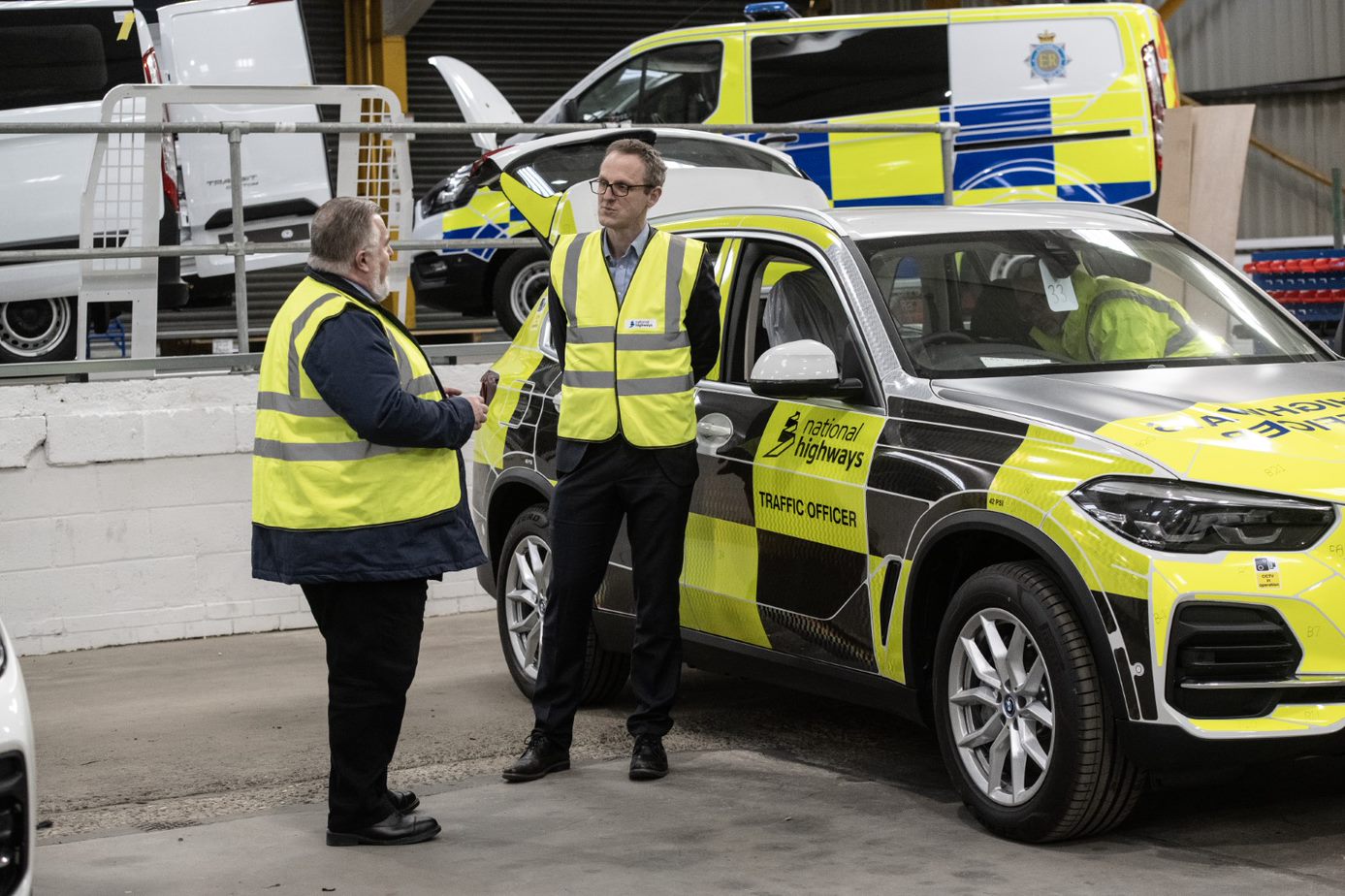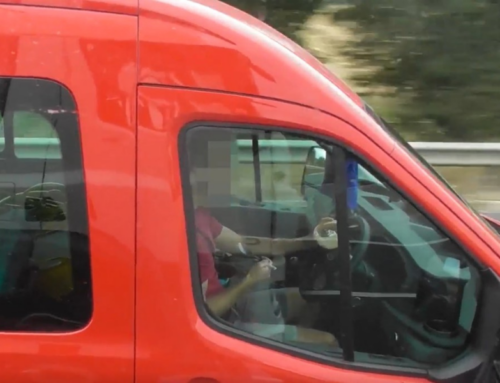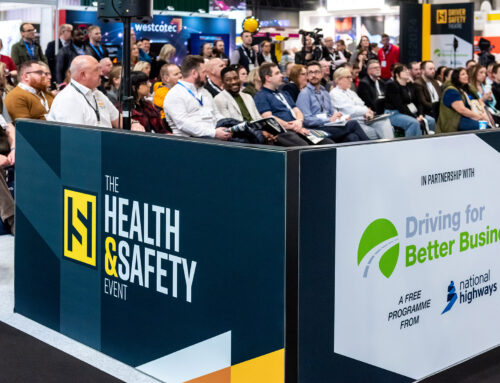Martin Edgecox has been National Fleet Manager at National Highways since 1999. His previous career was in the automotive supply chain working with manufacturers such as Volkswagen, Honda and Ford. He shares his experience of managing a diverse operational fleet.
Can you describe your role for us, Martin?
I’m National Fleet Manager within National Highways. I’m also a member of the Board of the Association of Fleet Professionals. I was voted on to the board in 2020 which is a great recognition by my industry and my peers and that allows me to add value and also raise the profile of the National Highways within the fleet industry. I manage nine staff and we are responsible for around 2,000 vehicles within the business, ranging from winter gritters, traffic officer 4x4s, an inspection fleet of SUV’s and company and pool cars.
We take a cradle to grave approach. We purchase, convert, deliver, maintain, and dispose of that the vehicle so we look after the entire lifecycle. Everything we operate with the exception of the winter fleet is below 3.5 tonnes and our winter gritter fleet is managed by our maintenance and repair contractors.
Your personal role is more strategic than operational, isn’t it?
My role is in developing fleet strategy, and in particular a strategy that aligns to the company’s net zero plan. So I’m thinking about carbon commitments. As we’re a government company we’re tied to targets set by the Department for Transport on zero emission vehicles, on what’s called the Road to Zero. So I really drive how we progress to meet those targets.
What is your greatest fleet challenge at the moment?
We were originally set a target by the Department for Transport (DfT) for 25% of our fleet to be ultra-low emission, which is to emit less than 50g of CO 2 per km, by December 2022. So that lent itself to plug in hybrids.
To put it in perspective, the plug-in hybrid electric vehicles for our traffic officers emit around 38g of CO 2 per km, compared to a diesel traffic officer vehicle which emits around 235g. By December we had reached 63% of the fleet as ultra-low emission. We smashed that target, which is great, but the next is more challenging. By 2027 our fleet must be zero emission at the tailpipe, as in vehicles need to be electric, or hydrogen fuel cell. That’s where the challenges start.
Rather than take a blanket approach and start embedding hundreds of EVs into the fleet, without people being able to operate appropriately or have the correct charging infrastructure, we’ve purchased 31 zero emission vehicles for a proof-of-concept trial. Our pool car fleet is a useful place to start because it is under less pressure in terms of payload and range.
How does good vehicle management support fleet safety?
I supply vehicles that are fit for purpose for the operation. We ensure they are safe. We purchase vehicles via the Crown Commercial Services Framework, and all the vehicles offered through that framework are NCAP safety rated. We ensure that the manufacturers’ safety systems and controls are in place and then we convert that vehicle to amber light operational status. And we’ll make sure that the any conversion is to the auto manufacturers’ approved standards through the approved conversion program. So I can always say that the vehicle we deploy, is type approved, and it’s converted to the highest standards possible.
Do you also formulate or enforce driver policies?
We develop policies but that’s then actually deployed at a regional level. We supply the fleet and the policies around the fleet. We insist on a POWDER check – a safety check on the vehicle before use. POWDER is the name amber and blue light fleets give to vehicle defect checks. Petrol, Oil, Water, Damage, Electrics, Rubber (ie tyres). Electrics also includes checking any charging cables and sockets where appropriate. The information from the POWDER check is retained and we use that to repair any defects to a vehicle. The POWDER checks have been paper-based so far but we are working on an app for vehicle checks which will link straight back into our service maintenance and repair agents.
How do you support regional managers in terms of improving driver performance?
We use vehicle telemetry, which helps us in two ways. For my side it helps me to monitor the health of the vehicles, through live diagnostics. This means we can pre-empt vehicle defects, such as low oil level, and correct it before there is any damage or off-road time.
Secondly it monitors driver behaviour with exception reporting for driver speeding, harsh braking, accelerating, erratic cornering, and so on. We manage all of that data, and we circulate that to the regional offices for action by local management. It also helps us to monitor the performance of our supply chain as well, when our vehicle goes in for repair. We can see if there’s any erratic driving, when a third party is driving the vehicle. Overall, it’s very productive for our workforce.
Has the telematics given measurably results?
When we first used telematics, in the early days, we concentrated on speed as an issue, because we were bringing new people into the business and that was the top priority. That’s become almost self-policing – we have embedded the reporting and drivers embraced it to the extent that it really drove positive behaviours. We recently chose a new telematics provider, and that’s given us an opportunity to innovate, so we are now looking at what we can achieve in terms of other issues. We’re looking to develop this further because there are opportunities to help improve our driving community, and by helping our drivers to improve we also improve the health and lifespan of the vehicle. Better driver behaviour reduces unplanned maintenance events, and the extra data will help us make more informed decisions.
Have you seen any improvements to date?
The most immediate way to measure this is that our average vehicle off road times have dropped. We were averaging three days for traffic officer vehicles off road, and that’s down to 2 days. Our inspection fleet now spends less than one day off road. That demonstrates that there is less wear and tear or damage to the vehicles, and much of that can be attributed to better driver behaviour.
Are you a fan of driver assistance technologies?
Yes. National Highways’ is number one priority is safety. It’s an imperative. So any assistance within a vehicle to protect its passengers is advantageous. There’s still a lot of learning to be done there, in understanding the data behind technologies to see how and when they add value, but things such as autonomous braking, if it’s saving people from impacts, then I’d say it’s valuable.
Do you also manage insurance for the fleet?
We manage the fleet insurance as a BAU (business as usual) activity. We’re an operational fleet and we need a measure of flexibility in how we operate. We trial vehicles for proof of concept, and we move vehicles around regions in order to average out mileage. Many of our vehicles are single driver, but that flexibility means that vehicles may pass between drivers. Moving forward in terms of telemetry, every driver will have their own ID, so that that will support the improved behaviours and allow us to track how individuals perform even across different vehicles. That will improve our road safety support.
However, it also goes hand in hand with our making sure that every vehicle maintains its best value when it comes to disposal. We own all of our vehicles outright, which gives us great flexibility to retire or replace vehicles as needed. We can even decide to use a damaged vehicle for green parts, because we are always considering our carbon footprint. We also have a duty to maximise and protect the value of the asset paid for by the taxpayer.
What advice would you give to another fleet manager?
Number one, engage with the driving community to understand what their needs are. It’s essential to meet the business needs and to secure vehicles that are fit for purpose.
Think about the whole life cost of a vehicle. Factor in maintenance, depreciation, tyres, fuel and all the other costs when considering purchase, not just price. An offer might look attractive initially but when you undertake due diligence and look at the whole life costs, it may not look as good.
Work alongside your established departments to ensure you embed the correct infrastructure, including charging infrastructure, for your future fleet needs.
There’s a hearts and minds piece as well about taking the driver community along with you in decarbonisation because there’s a seismic shift operationally when moving from diesel vehicles into the EV arena. You need to ensure that the workforce understands the challenge, and why the company is taking that step forward.
Finally, trust the people around you. If you have good fleet managers or team members, with experience and expertise, trust them to deliver what they need to deliver.






